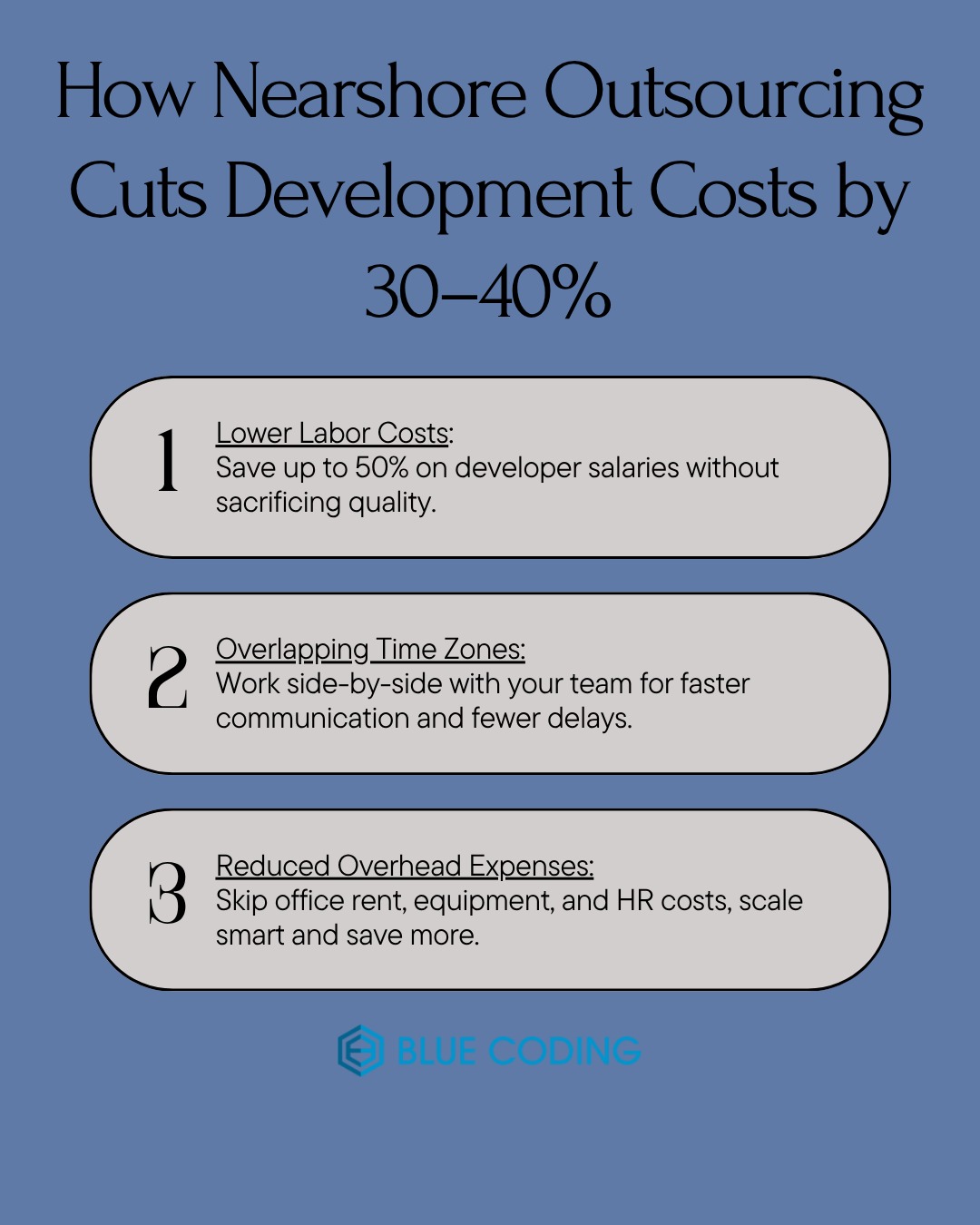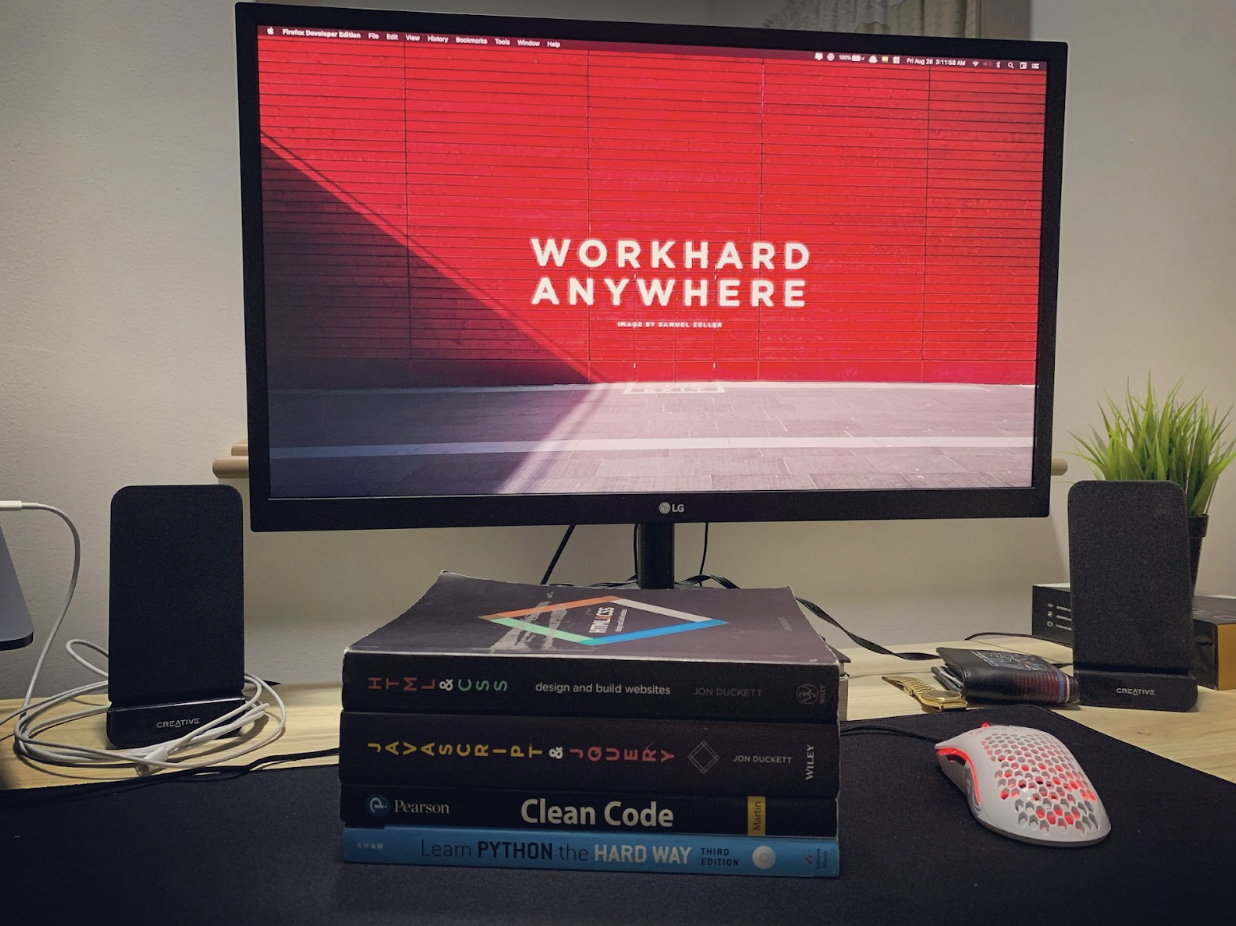 News
News
Software development is definitely not cheap and while everyone wants to build the next big thing, no one wants to drain their budget faster than their app loads. That’s where nearshore outsourcing steps in like the unsung hero of smart scaling (we have a whole other blog post with more details on the nearshore outsourcing costs). But wait! Before you imagine a team halfway across the world working while you sleep and sending emails you read with your morning coffee, nearshoring is not that. It’s real-time collaboration. It’s cutting costs without cutting corners. It’s fluent English, overlapping time zones, and developers who get your tech stack and your sense of urgency. In this blog, we’re diving into how nearshore outsourcing can trim 30–40% off your development costs, not just by saving dollars, but by saving time, stress, and headaches too. Ready to build smarter? Let’s break it down further!

Is Nearshore Outsourcing Cost-Effectiveness Even A Thing?
Yes, nearshore outsourcing can help cut development costs, though not always in the way people expect. Many people believe that the cost-effectiveness mentioned is because of paying lower hourly rates. That is not the case though! The real savings often come from faster turnaround times, fewer communication barriers, and overlapping time zones that allow for more real-time collaboration. This leads to fewer project delays and better alignment with your in-house team. When done right, nearshoring helps you build quality software while staying within budget.
Cut Outsourcing Development Costs by 30–40% Without Cutting Corners
1. Lower Labor Costs Without Sacrificing Quality
One of the most compelling reasons companies turn to nearshore outsourcing is the opportunity to significantly reduce development costs, often by as much as 30–40%. This doesn’t mean going for a cheap and low quality option but is more related to smart resource allocation. For example, while a senior software engineer in the U.S. commands a salary between 120,000 to 160,000 annually, a developer with comparable skills and experience in Brazil or Colombia typically earns between 40,000 to 60,000. That’s a direct cost savings of more than 50%, all without compromising the integrity or quality of your codebase. The key difference is it’s geography and market economics. Nearshore developers are often graduates of top-tier universities, fluent in English, and well-versed in the same frameworks, languages, and agile practices used by U.S. teams. Don't worry, you’re not settling for less but are just paying less for the same, high-level output.
2. Fewer Delays Thanks to Overlapping Time Zones
One of the biggest frustrations with offshore outsourcing is time zone lag. Waiting 12 hours for feedback or a code review slows everything down and those delays add up. Nearshoring solves this by aligning your remote team’s working hours with your own. Developers in Latin America operate within one to three hours of most U.S. time zones, making real-time collaboration not just possible but seamless. That means quicker standups, faster turnarounds on bug fixes, and more efficient iteration cycles. According to Accelerance, companies lose up to 20% of project momentum due to communication breakdowns with offshore teams. Nearshoring eliminates that bottleneck, helping you keep your projects on track, your stakeholders happy, and your team stress-free.
3. Reduced Overhead and Infrastructure Expenses
The savings don’t stop at salaries. When you build an in-house team, the hidden costs add up fast due to office rent, equipment, onboarding, benefits, and administrative overhead. On average, it costs about $4,000 just to onboard a single employee, according to SHRM. With a nearshore partner, most of that burden disappears. You’re not leasing office space or buying new laptops as they’ve got that covered. Payroll, HR, benefits? Handled. This makes scaling smoother and more affordable. Instead of pouring budget into infrastructure, you get to invest more directly into product development and innovation. It’s a leaner model that keeps you agile and financially efficient.
4. Faster Time-to-Market = Higher ROI
Traditional hiring through recruitment firms can quietly eat away at your budget. The process could cost you up to $39,000 in recruiter fees alone. Multiply that by a few roles, and you're staring at a six-figure expense just to get your team off the ground. With nearshore partners, that entire layer is removed. These firms maintain deep talent pipelines of pre-vetted engineers, designers, and PMs, ready to plug into your team with minimal ramp-up. No headhunter fees. No lengthy search process. Just high-quality hires at a fraction of the usual cost.
5. Pay-as-You-Go Flexibility
Traditional hiring locks you into long-term commitments such as full-time salaries, benefits, PTO, and more. But with nearshore outsourcing, you gain flexibility that maps to your actual needs. Need three extra devs for a three-month sprint? Done. Want to pause for a month after a major release? No problem. You scale up and down based on workload, not on arbitrary headcount goals. That kind of resource elasticity is nearly impossible (or really expensive) to replicate in-house. Instead of carrying the cost of underutilized staff, you align spend with velocity and keep your burn rate lean.
6. Avoid Scope Creep Costs With Better Communication
Scope creep is a silent budget killer. It’s not always the code as it’s mostly the overwhelming confusion. Misunderstandings about requirements, incomplete specs, or inconsistent feedback loops can lead to hours of rework. That’s what often happens in offshore setups with 10–12 hour time gaps. But with nearshore teams working in real time, ambiguity gets resolved fast. Developers can hop on a quick call, clarify a user story, or get immediate input from your product team. That tight feedback loop leads to tighter execution and a lot fewer billable hours lost to confusion.
7. Retention Without the Overhead
Hiring great developers is hard. Keeping them is harder and expensive. Salaries climb fast, perks keep piling up, and replacing someone can cost you 6–9 months of their salary. With a nearshore partner, that’s not your headache. They manage retention, training, and employee satisfaction on their end so you don’t have to absorb those costs. Plus, Latin American tech talent tends to be loyal when engaged in meaningful, long-term work with U.S. clients. That means less turnover and more continuity on your projects, without inflating your internal payroll.
8. Focus Your Core Team on High-Impact Work
Your in-house engineers are expensive. That’s why their time should be spent on product-defining work, not repetitive tasks, legacy maintenance, or QA. Nearshore teams are ideal for handling modular, clearly scoped assignments that can be offloaded without sacrificing quality. Think integrations, feature enhancements, or UI revamps. By freeing up your core team to focus on architecture, innovation, and roadmap execution, you extract more value from your internal investment and get more done across the board.
9. Cost Transparency and Predictability
Surprise expenses are another area where in-house hiring hits your budget hard. Think unplanned PTO, equipment breakdowns, benefit renewals, or sudden raises. With nearshore partners, pricing is typically flat-rate or hourly with clear scope and SLAs. That means your finance team can actually forecast spend with confidence. No sticker shock. No ballooning payroll. Just predictable monthly costs that map directly to deliverables. It’s budget control without the fine print.
The Real Nearshore Outsourcing ROI: It’s Not Just About Cost Savings
When people talk about ROI in outsourcing, they usually zero in on dollar signs but nearshore outsourcing ROI goes way beyond just the budget line. It’s about the bigger picture: faster releases, smoother workflows, and better alignment with your internal team. Think fewer late-night Slack messages, fewer “lost in translation” moments, and more actual progress. That operational efficiency directly translates into higher returns. Projects move faster, quality stays high, and your team isn’t stuck in bottlenecks or burnout. The return on investment? You get to launch quicker, pivot faster, and focus more energy on growing the business rather than putting out fires. That's the ROI you can actually feel in your day-to-day life.



